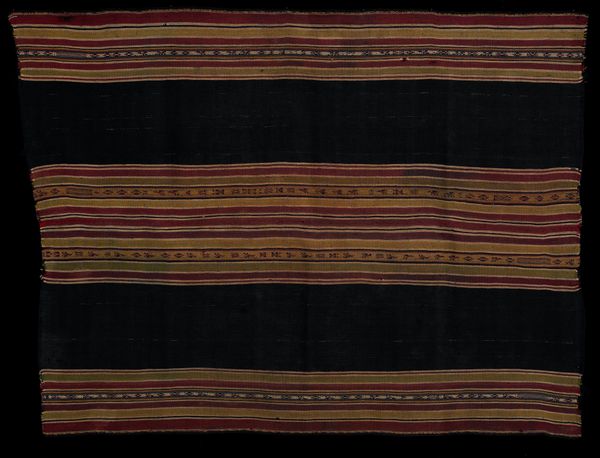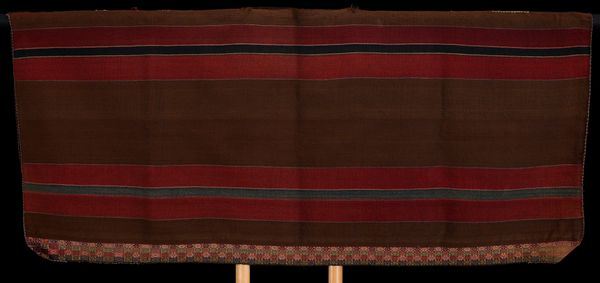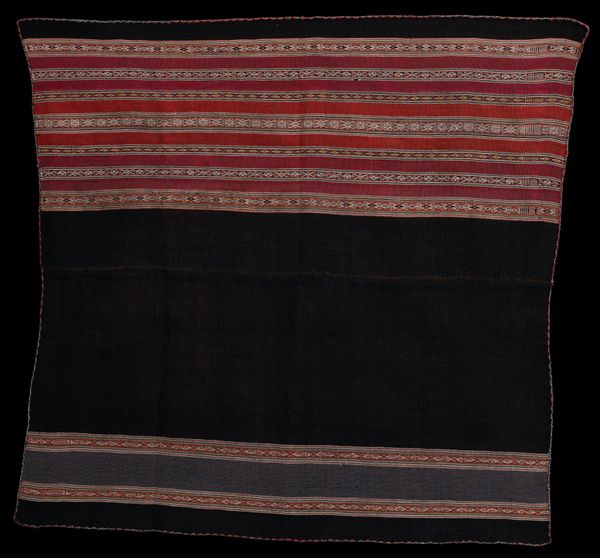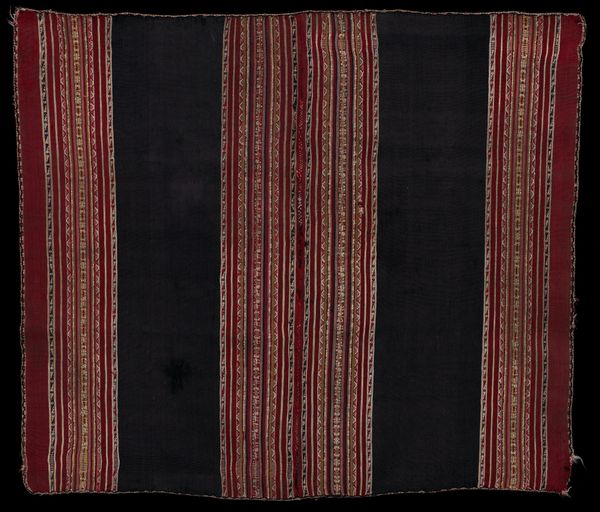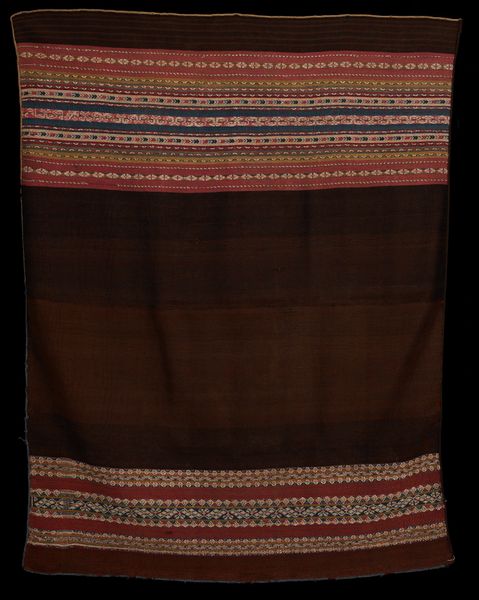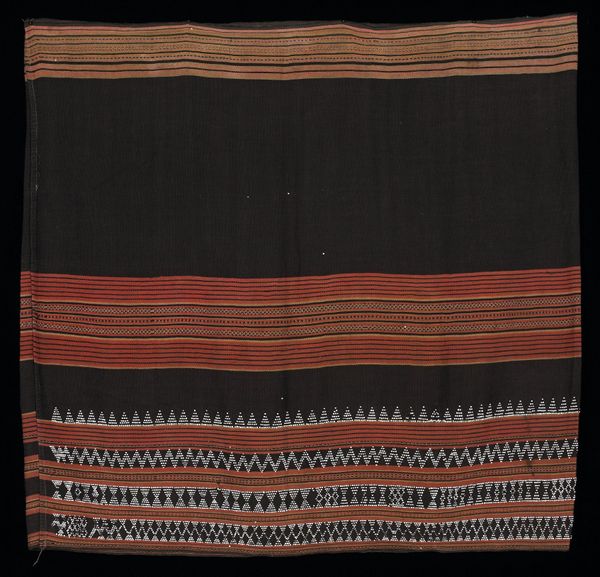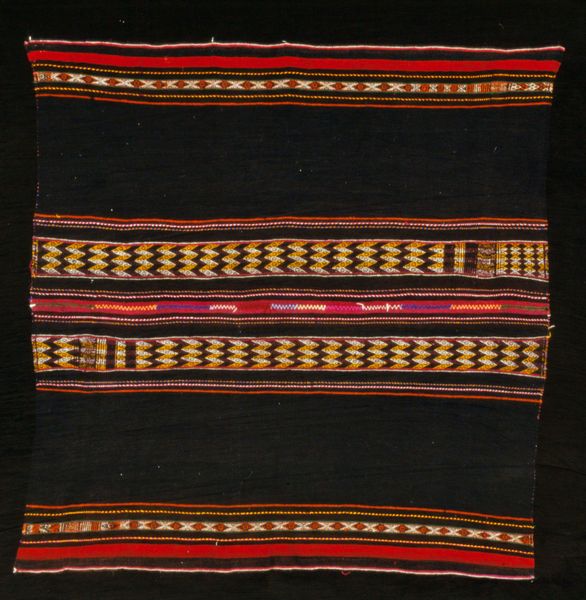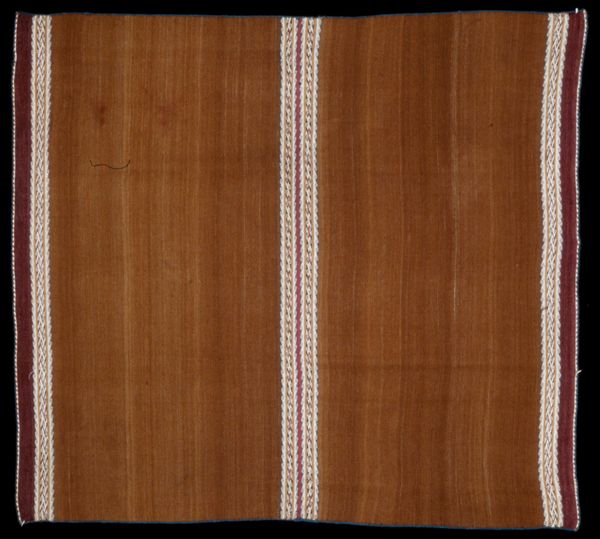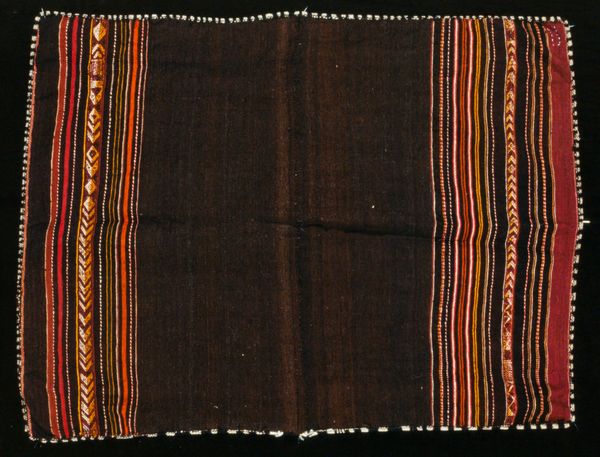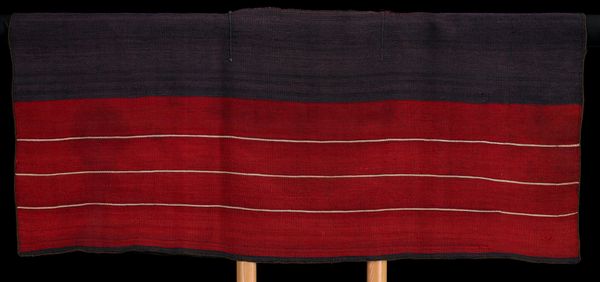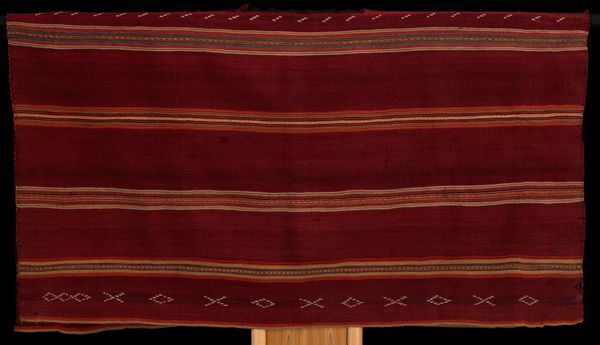
weaving, textile
#
natural stone pattern
#
dark clothe
#
weaving
#
textile
#
geometric pattern
#
grainy texture
#
abstract pattern
#
minimal pattern
#
organic pattern
#
geometric
#
repetition of pattern
#
pattern repetition
#
layered pattern
#
indigenous-americas
Dimensions: 55 x 63 1/2 in. (139.7 x 161.29 cm)
Copyright: Public Domain
Curator: This is an Aymara woman’s ceremonial skirt, an *asku*, dating back to approximately 1850. It’s currently held in the collection of the Minneapolis Institute of Art. Editor: My immediate impression is of groundedness and quiet dignity. The deep brown field is incredibly rich and calming, while the banded sections introduce a welcome bit of levity and rhythmic interest. Curator: These skirts, especially the details within the bands, carry a potent cultural weight. The colors, motifs, and even the weave itself were laden with symbolic meaning. Certain patterns might signify status, lineage, or specific ritual roles within the community. The horizontal bands, in their repetition, reflect cyclical concepts of time and existence so central to Aymara cosmovision. Editor: Absolutely. The horizontal banding also creates a very clear structure. The warm shades of red, orange and muted gold used for the thin lines really sing against the darker weave of the underlying cloth, particularly as they're broken by the narrow band of contrasting texture with the pale green in the middle. This lends the whole piece a quiet vibrancy. Curator: That vibrancy certainly would have played a role in ceremonial settings, signaling not just belonging but also embodying the collective memory of the Aymara people. Textiles such as this become more than mere clothing; they become active participants in maintaining cultural continuity. The hand-crafted nature adds another layer, doesn't it? Each imperfection underscores the individual artisan and their link to the community. Editor: Exactly! And consider the textile itself – its weave, the quality of the threads. It’s a beautiful, tightly structured piece where individual fibers work in harmony, creating both visual impact and physical form. The texture invites closer inspection. It makes you think about the time and care poured into its construction. Curator: When we consider the ritual context, those hours become a form of devotion, weaving prayer and intent directly into the skirt. An object like this connects to a profound sense of identity. Editor: Yes, looking closely reveals the artist's formal choices—a study in simple geometric abstraction. The textile embodies an incredibly rich narrative tradition using only bands of color and texture. Curator: Seeing it now through both lenses enriches my understanding. Thanks for revealing a different layer. Editor: The pleasure was all mine. To decode these symbolic and structural aspects together helps bridge our understanding across both time and cultures.
Comments
No comments
Be the first to comment and join the conversation on the ultimate creative platform.
